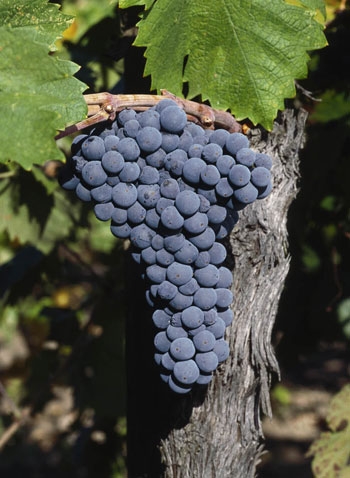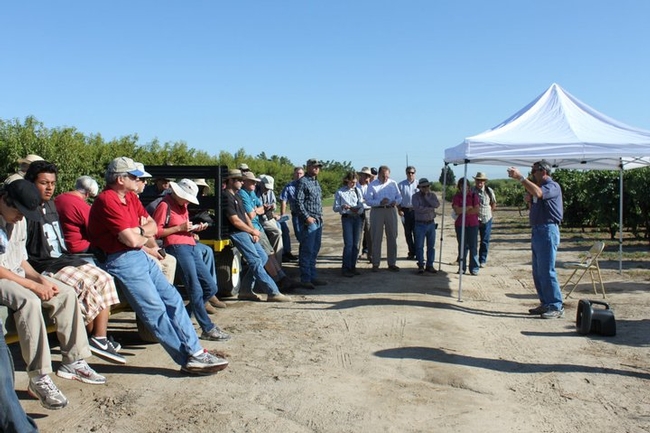Posts Tagged: Jim Wolpert
Searching for zinfandel clonal excellence
Wolpert went on a California “safari” to find old-vine selections that had evolved uniquely over time on their own home turf. With support of Association of Zinfandel Advocates & Producers and the American Vineyard Association, UC Davis created the Zinfandel Heritage Vineyard in 1995, the article said, to record, study and preserve distinctive zinfandel clones which they collected from 50 notable old-vine vineyards in 14 counties throughout California. (The Zinfandel Heritage Vineyard website says the vineyard was established in 1989.)
The heritage vineyard helps the industry find answers to some of the mysteries surrounding zinfandel and preserves the special qualities of the old vines for future generations. The vineyard is of historical and viticultural interest, and represents a resource for future plantings of zinfandel with a broad range of selections.
Kearney trial could reveal the next great white wine
San Francisco Chronicle wine columnist Jon Bonné wrote about the prospects for another variety of white wine to rise in popularity, perhaps to the level of such well known wines as Chardonnay, Sauvignon Blanc, Pinot Gris and Reisling. In the article, Bonné referenced a new trial at UC Kearney Agricultural Research and Extension Center, where 55 varieties are under study, from Trebbiano to Petit Manseng. The study was designed to determine what might best match the San Joaquin Valley's hot climes. Project leader UC Cooperative Extension viticulture specialist Jim Wolpert was intrigued by grapes from warm spots like Sicily, where Grillo and Carricante thrived in the heat. At the same time, he saw a flood of new varieties being made available by Davis' Foundation Plant Services, yet little interest from nurseries. An experiment was born. "I think there's a treasure trove of varieties there," Wolpert said. "All we need to find is a couple."
Proposed Green Tech High School Academy draws critics
Jennifer Bonnett, Lodi News Sentinel
Lodi Unified School District has proposed developing a Green Tech High School Academy, the first of its kind in California. The district has already spent hundreds of hours and thousands of dollars laying the groundwork for a new school that some trustees say they can’t support. Parent Paul Verdegaal called it the wrong idea at the wrong time. “It appears that LUSD is once again chasing pipe dreams at great cost in money and opportunities for students to actually learn, especially with reduced budgets," he said. The article noted that Verdegaal is a farm adviser for the University of California Cooperative Extension in San Joaquin County. Verdegaal said he sees students who don’t understand science or math, key subjects in creating sustainable practices.
This year's olive harvest is the pits
Martin Espinoza, The Press Democrat
Sonoma County olive growers are bracing for a disastrous harvest, one that could wipe out the supply of fresh local olive oil. Paul Vossen, a farm advisor with the University of California Cooperative Extension, said that in an average low-yield year olive orchards produce 50 to 60 percent less. “We have some places where they have almost nothing,” he said.
New California ag secretary has many UC ties
Gov. Brown's newly appointed secretary of agriculture, Karen Ross, brings numerous University of California connections to her new office.
An article published yesterday in California Farmer magazine says Ross is a member of:
- The Center for Cooperatives at UC Davis
- The Dean's Advisory Committee for the College of Agriculture and Environmental Science at UC Davis
- The Program Advisory Committee for the UC Sustainable Agriculture Research and Education Program
- The Board of Fellows & Visitors for Viticulture and Enology at UC Davis
Ross was designated ANR's delegate to the national Council for Agricultural Research, Extension, and Teaching in 2008, and served as a member of the UC President’s Advisory Commission on Agriculture and Natural Resources.
In 2007, Ross received an "Award of Distinction" from the UC Davis CAES.
"Karen is an excellent sounding board for what issues are on the minds of growers and the kinds of research and education needs that would most impact their efforts to stay competitive in what has become a global wine business,” the award announcement quoted Jim Wolpert, former chair of the Department of Viticulture and Enology. “The department wanted to recognize her for her leadership both in California and nationally."
Most recently Ross, the former president of the California Association of Winegrape Growers, has served as U.S. Agriculture Secretary Tom Vilsack's chief of staff. Some lament the fact that Ross's California connection will be lost at the federal level and believe the fallout could be aggravated by other California power losses, according to an article in the Fresno Bee.
But state ag leaders support the appointment, said the California Farmer article.
"Karen Ross is well-suited for the role of food and agriculture secretary. She has firsthand knowledge about the many challenges farmers and ranchers face each day, not just in California but throughout the nation," the story quotes Paul Wenger, California Farm Bureau Federation president.
Rich Rominger, CDFA Secretary under then-Governor Brown from 1977 to 1982, said Gov. Brown selected the best person for the job.
"Karen Ross is the leader we need to address the critical issues of agriculture, water, clean energy development and climate change," Rominger is quoted.
Ross's appointment must be confirmed by the California State Senate.

Karen Ross



